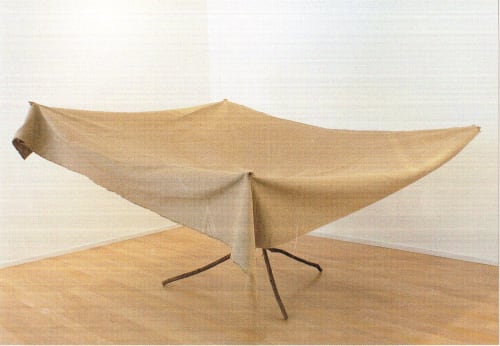Barry Flanagan (1941–2009) was a British sculptor celebrated for his inventive approach to form, material, and movement. Initially associated with the avant-garde experiments of the late 1960s, Flanagan worked with sand, rope, cloth, and other unconventional materials before turning in the late 1970s to the bronze sculptures for which he became internationally renowned. His dynamic, often whimsical hare figures—leaping, dancing, or playing instruments—challenge the monumentality of traditional sculpture and reveal Flanagan’s deep interest in gesture, vitality, and the poetic potential of form. Across his career, he combined conceptual rigor with an intuitive, playful sensibility that continues to captivate audiences.
Major solo exhibitions include Tate Britain, London, UK; Irish Museum of Modern Art (IMMA), Dublin, Ireland; Yorkshire Sculpture Park, West Bretton, UK; Kunsthalle Recklinghausen, Germany; Musée d’Art Moderne et d’Art Contemporain (MAMAC), Nice, France; Galerie Lévy, Hamburg, Germany; Waddington Galleries, London, UK; Rijksmuseum Kröller-Müller, Otterlo, Netherlands.
His work is included in major collections such as Tate, London, UK; Museum of Modern Art (MoMA), New York, USA; Metropolitan Museum of Art, New York, USA; Rijksmuseum Kröller-Müller, Otterlo, Netherlands; British Council Collection, London, UK; Hirshhorn Museum and Sculpture Garden, Washington, D.C., USA; Scottish National Gallery of Modern Art, Edinburgh, UK.
